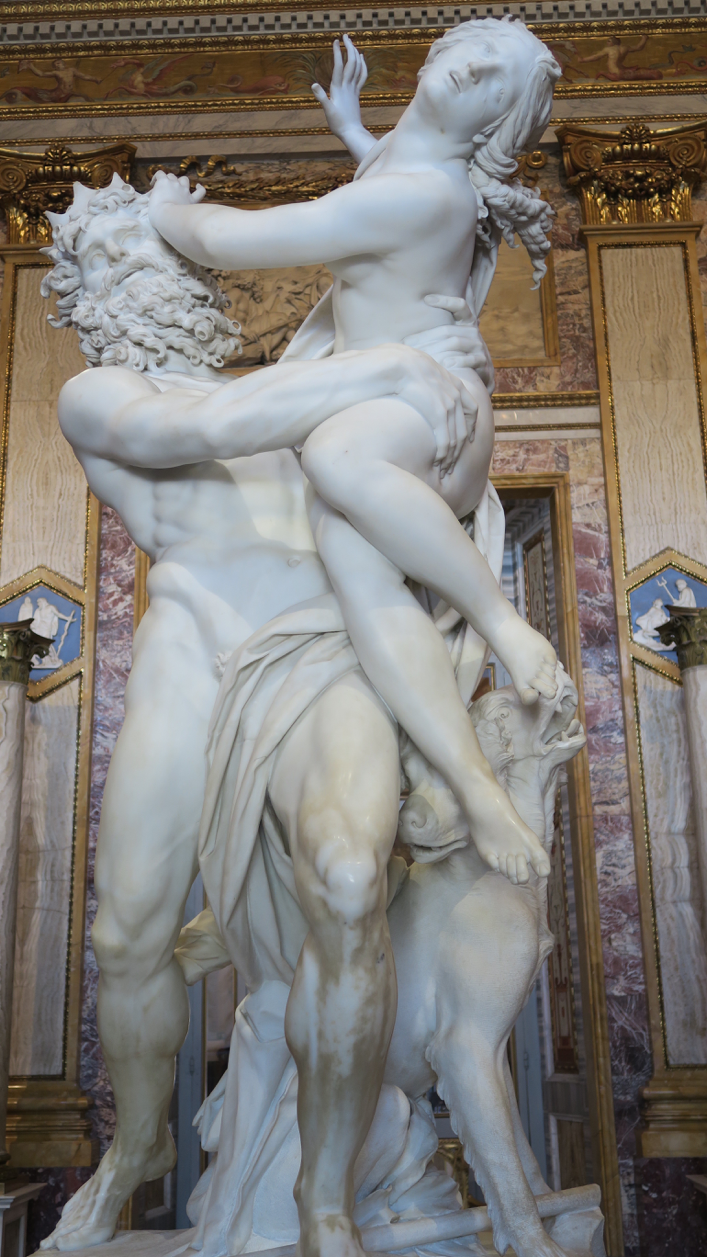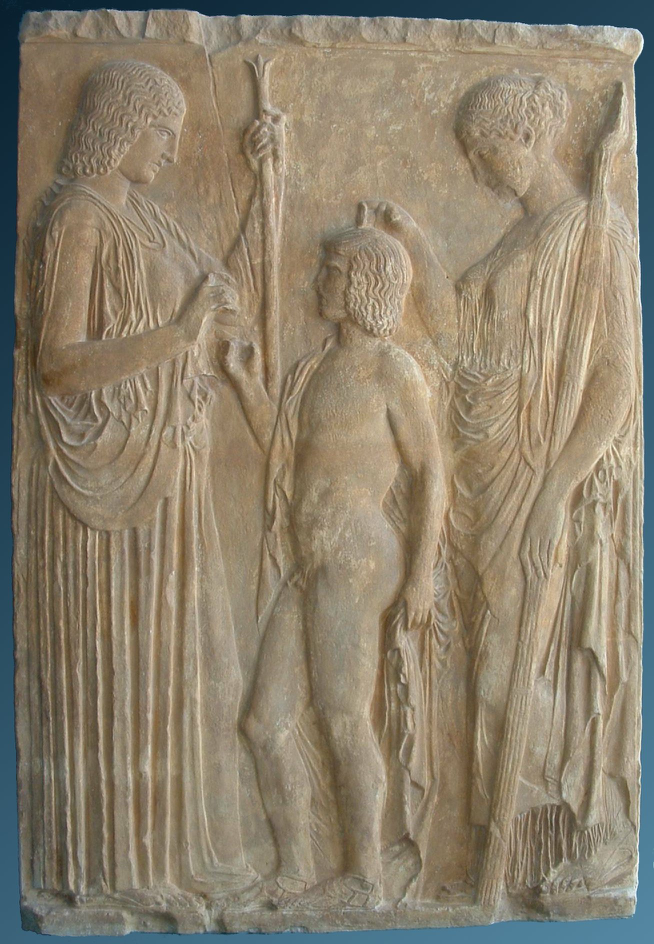1.10: Demeter
- Page ID
- 15347
\( \newcommand{\vecs}[1]{\overset { \scriptstyle \rightharpoonup} {\mathbf{#1}} } \)
\( \newcommand{\vecd}[1]{\overset{-\!-\!\rightharpoonup}{\vphantom{a}\smash {#1}}} \)
\( \newcommand{\dsum}{\displaystyle\sum\limits} \)
\( \newcommand{\dint}{\displaystyle\int\limits} \)
\( \newcommand{\dlim}{\displaystyle\lim\limits} \)
\( \newcommand{\id}{\mathrm{id}}\) \( \newcommand{\Span}{\mathrm{span}}\)
( \newcommand{\kernel}{\mathrm{null}\,}\) \( \newcommand{\range}{\mathrm{range}\,}\)
\( \newcommand{\RealPart}{\mathrm{Re}}\) \( \newcommand{\ImaginaryPart}{\mathrm{Im}}\)
\( \newcommand{\Argument}{\mathrm{Arg}}\) \( \newcommand{\norm}[1]{\| #1 \|}\)
\( \newcommand{\inner}[2]{\langle #1, #2 \rangle}\)
\( \newcommand{\Span}{\mathrm{span}}\)
\( \newcommand{\id}{\mathrm{id}}\)
\( \newcommand{\Span}{\mathrm{span}}\)
\( \newcommand{\kernel}{\mathrm{null}\,}\)
\( \newcommand{\range}{\mathrm{range}\,}\)
\( \newcommand{\RealPart}{\mathrm{Re}}\)
\( \newcommand{\ImaginaryPart}{\mathrm{Im}}\)
\( \newcommand{\Argument}{\mathrm{Arg}}\)
\( \newcommand{\norm}[1]{\| #1 \|}\)
\( \newcommand{\inner}[2]{\langle #1, #2 \rangle}\)
\( \newcommand{\Span}{\mathrm{span}}\) \( \newcommand{\AA}{\unicode[.8,0]{x212B}}\)
\( \newcommand{\vectorA}[1]{\vec{#1}} % arrow\)
\( \newcommand{\vectorAt}[1]{\vec{\text{#1}}} % arrow\)
\( \newcommand{\vectorB}[1]{\overset { \scriptstyle \rightharpoonup} {\mathbf{#1}} } \)
\( \newcommand{\vectorC}[1]{\textbf{#1}} \)
\( \newcommand{\vectorD}[1]{\overrightarrow{#1}} \)
\( \newcommand{\vectorDt}[1]{\overrightarrow{\text{#1}}} \)
\( \newcommand{\vectE}[1]{\overset{-\!-\!\rightharpoonup}{\vphantom{a}\smash{\mathbf {#1}}}} \)
\( \newcommand{\vecs}[1]{\overset { \scriptstyle \rightharpoonup} {\mathbf{#1}} } \)
\( \newcommand{\vecd}[1]{\overset{-\!-\!\rightharpoonup}{\vphantom{a}\smash {#1}}} \)
\(\newcommand{\avec}{\mathbf a}\) \(\newcommand{\bvec}{\mathbf b}\) \(\newcommand{\cvec}{\mathbf c}\) \(\newcommand{\dvec}{\mathbf d}\) \(\newcommand{\dtil}{\widetilde{\mathbf d}}\) \(\newcommand{\evec}{\mathbf e}\) \(\newcommand{\fvec}{\mathbf f}\) \(\newcommand{\nvec}{\mathbf n}\) \(\newcommand{\pvec}{\mathbf p}\) \(\newcommand{\qvec}{\mathbf q}\) \(\newcommand{\svec}{\mathbf s}\) \(\newcommand{\tvec}{\mathbf t}\) \(\newcommand{\uvec}{\mathbf u}\) \(\newcommand{\vvec}{\mathbf v}\) \(\newcommand{\wvec}{\mathbf w}\) \(\newcommand{\xvec}{\mathbf x}\) \(\newcommand{\yvec}{\mathbf y}\) \(\newcommand{\zvec}{\mathbf z}\) \(\newcommand{\rvec}{\mathbf r}\) \(\newcommand{\mvec}{\mathbf m}\) \(\newcommand{\zerovec}{\mathbf 0}\) \(\newcommand{\onevec}{\mathbf 1}\) \(\newcommand{\real}{\mathbb R}\) \(\newcommand{\twovec}[2]{\left[\begin{array}{r}#1 \\ #2 \end{array}\right]}\) \(\newcommand{\ctwovec}[2]{\left[\begin{array}{c}#1 \\ #2 \end{array}\right]}\) \(\newcommand{\threevec}[3]{\left[\begin{array}{r}#1 \\ #2 \\ #3 \end{array}\right]}\) \(\newcommand{\cthreevec}[3]{\left[\begin{array}{c}#1 \\ #2 \\ #3 \end{array}\right]}\) \(\newcommand{\fourvec}[4]{\left[\begin{array}{r}#1 \\ #2 \\ #3 \\ #4 \end{array}\right]}\) \(\newcommand{\cfourvec}[4]{\left[\begin{array}{c}#1 \\ #2 \\ #3 \\ #4 \end{array}\right]}\) \(\newcommand{\fivevec}[5]{\left[\begin{array}{r}#1 \\ #2 \\ #3 \\ #4 \\ #5 \\ \end{array}\right]}\) \(\newcommand{\cfivevec}[5]{\left[\begin{array}{c}#1 \\ #2 \\ #3 \\ #4 \\ #5 \\ \end{array}\right]}\) \(\newcommand{\mattwo}[4]{\left[\begin{array}{rr}#1 \amp #2 \\ #3 \amp #4 \\ \end{array}\right]}\) \(\newcommand{\laspan}[1]{\text{Span}\{#1\}}\) \(\newcommand{\bcal}{\cal B}\) \(\newcommand{\ccal}{\cal C}\) \(\newcommand{\scal}{\cal S}\) \(\newcommand{\wcal}{\cal W}\) \(\newcommand{\ecal}{\cal E}\) \(\newcommand{\coords}[2]{\left\{#1\right\}_{#2}}\) \(\newcommand{\gray}[1]{\color{gray}{#1}}\) \(\newcommand{\lgray}[1]{\color{lightgray}{#1}}\) \(\newcommand{\rank}{\operatorname{rank}}\) \(\newcommand{\row}{\text{Row}}\) \(\newcommand{\col}{\text{Col}}\) \(\renewcommand{\row}{\text{Row}}\) \(\newcommand{\nul}{\text{Nul}}\) \(\newcommand{\var}{\text{Var}}\) \(\newcommand{\corr}{\text{corr}}\) \(\newcommand{\len}[1]{\left|#1\right|}\) \(\newcommand{\bbar}{\overline{\bvec}}\) \(\newcommand{\bhat}{\widehat{\bvec}}\) \(\newcommand{\bperp}{\bvec^\perp}\) \(\newcommand{\xhat}{\widehat{\xvec}}\) \(\newcommand{\vhat}{\widehat{\vvec}}\) \(\newcommand{\uhat}{\widehat{\uvec}}\) \(\newcommand{\what}{\widehat{\wvec}}\) \(\newcommand{\Sighat}{\widehat{\Sigma}}\) \(\newcommand{\lt}{<}\) \(\newcommand{\gt}{>}\) \(\newcommand{\amp}{&}\) \(\definecolor{fillinmathshade}{gray}{0.9}\)Roman name: Ceres
Epithets: Chthonian (with daughter Persephone; refers to their status as goddesses associated with the earth, χθών [chthōn] being a Greek word for earth/land)
Symbols: wheat, grain
Functions: Goddess of agriculture and grain
Demeter and Persephone
Demeter was a daughter of Cronus and Rhea and was swallowed by her father (along with the rest of Cronus and Rhea’s children) shortly after her birth. [See Origins] After Zeus rescued his older siblings from their father, Demeter had an affair with her brother Zeus which resulted in a daughter, Persephone. Hades fell deeply in love with Persephone, and the following story about them is told in the Homeric Hymn to Demeter. Zeus gave his consent for Hades to marry his daughter, but because he believed that Demeter would not approve of the match, he told Hades to abduct Persephone and take her to his realm in the Underworld. With the aid of Gaia (Mother Earth, who is also known as Ge), Hades did just that.
Persephone was out gathering flowers with other young nymphs and goddesses, and she spotted an unusual and beautiful narcissus flower, blooming with the help of Gaia in a particular spot where a trap had been set by Zeus and Hades. When Persephone went to pluck the flower, the earth split open and out came Hades in his chariot. He snatched up the girl, and took her down to his kingdom beneath the earth.
For nine days Demeter searched far and wide for her daughter, but no one knew what had happened to Persephone until Demeter happened upon Hecate, a moon goddess who had heard the abduction but could not say who had taken Persephone. Together, Hecate and Demeter continued to search for Persephone until they came upon Helius, the sun god. Helius, who sees everything, told the goddesses the information they wished to know, that Zeus had allowed Persephone to be taken by Hades. Helius encouraged Demeter to accept the situation, but instead she grew so angry that she refused to go back to Olympus [see Olympus Mons on map].

The Rape of Proserpina by Bernini in the Galleria Borghese in Rome.

Close up of Bernini’s Rape of Proserpina
Demeter in Eleusis
Demeter wandered the earth in the likeness of an old woman named Dos until she came upon the city of Eleusis. There, at the town well, she met the daughters of the king, who offered to help her find work as a nurse. (They did not recognize her as a goddess because of her disguise.) In fact, they said that their mother, Metaneira, had just given birth to a baby boy, and that she would probably welcome Dos into her home as a nurse.
So Demeter, disguised as Dos, became the nurse for the son of the king, Demophon. As a way of thanking the family for their kindness, Demeter began a process that would make the boy immortal. She gave him ambrosia to eat (ambrosia is the food of the gods) and every night she would place him in the fire to burn away his mortal parts. One night, Metaneira, the child’s mother, visited the nursery to see how the old woman was doing with the boy and found him in the fire. She screamed in alarm, but this angered Demeter, who (being a goddess) did not like her actions questioned. Demeter took Demophon out of the fire (informing Metaneira that her son would have become immortal) and then she revealed her divinity to the queen. Demeter now revealed herself in her true form; she became young and beautiful, and the house was filled with a brilliant light. The Eleusinians were distraught at having angered a goddess, and they wanted to propitiate her. Demeter instructed the Eleusinians to build a temple to her, which they did, and she established her mystery cult in the city. But Demeter took up her abode in her new temple, and she refused to return to Olympus.
Persephone and the Seasons
Still without her daughter, Demeter was so angry at Zeus that she stayed in her temple in Eleusis and would not join the other gods on Olympus. Furthermore, she caused a drought on the earth which lasted for an entire year, and nearly killed all the mortals. Zeus realized that if all the mortals died there would be no one to sacrifice to the gods, so he sent Hermes to persuade Hades to let Persephone return to her mother. Hades agreed to allow Persephone to return, but before she left, he tricked her into eating a seed from a pomegranate. Demeter was ecstatic to reunite with her daughter, but her spirits fell when she learned that Persephone had eaten during her time in the Underworld. There seems to have been a rule that if someone eats anything in Hades, even something as small as a pomegranate seed, they can never leave. A bargain was struck, however, between the god of the Underworld and the goddess of grain: for two thirds of the year (spring, summer, and early fall), Persephone would live with her mother and the plants would grow, but for the remaining third (late fall and winter), she would live with her husband below the earth and all the plants would die (Homeric Hymn to Demeter). This, of course, is the origin of the seasons (a natural aitiological myth).
Triptolemus
In some versions of the story, after Demeter’s time in Eleusis, the goddess lent her chariot to a young man from the city, Triptolemus, so he could spread knowledge of her gifts, the planting and harvesting of crops, especially wheat. She aided him when foreign kings did not take kindly to the gifts and she helped him gain the throne of Eleusis. In return he began the tradition of the festival to Demeter called the Thesmophoria. This was a festival celebrated by women all over Greece and was the second most prominent rite for Demeter, after the Eleusinian Mysteries.

Demeter and Kore (Persephone) with Triptolemus on a relief in the museum at Eleusis
The Origin of Demeter
Demeter was probably an indigenous pre-Hellenic goddess of fertility. Her name means “Mother Da,” which may or may not mean “Mother Earth”. She is closely connected with her daughter and is worshipped in the manner of chthonian deities. [See Chthonian Deities]

